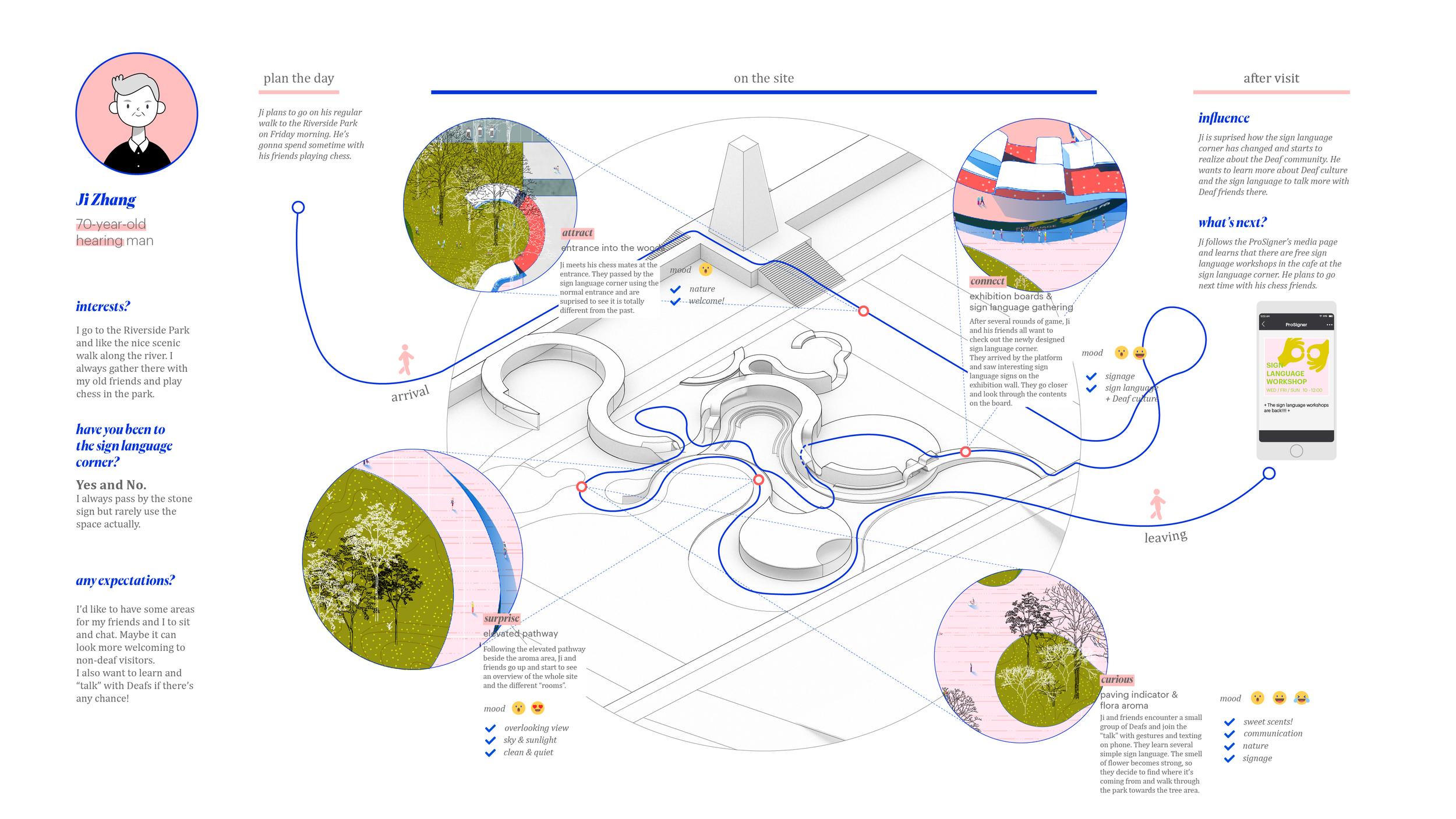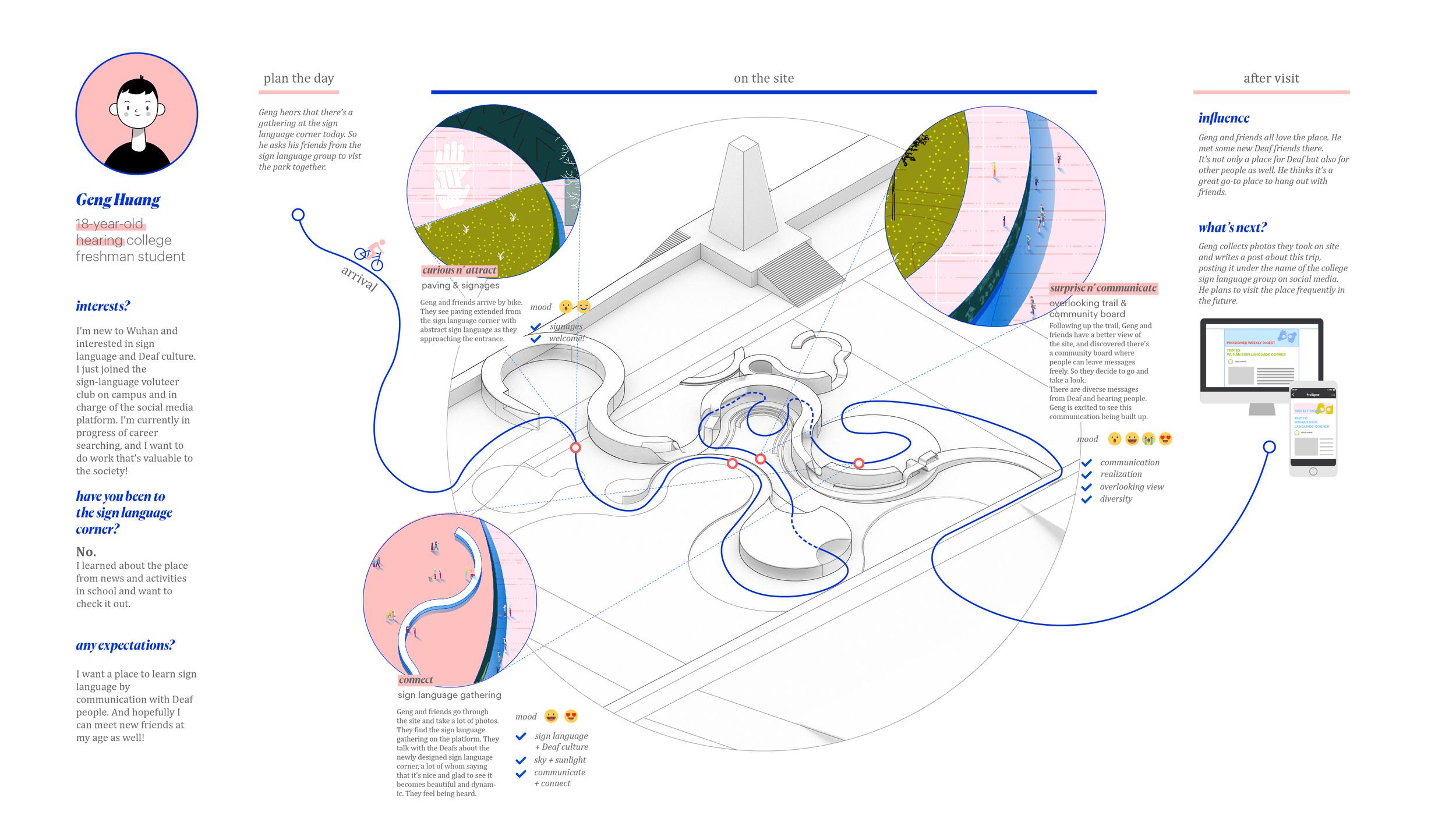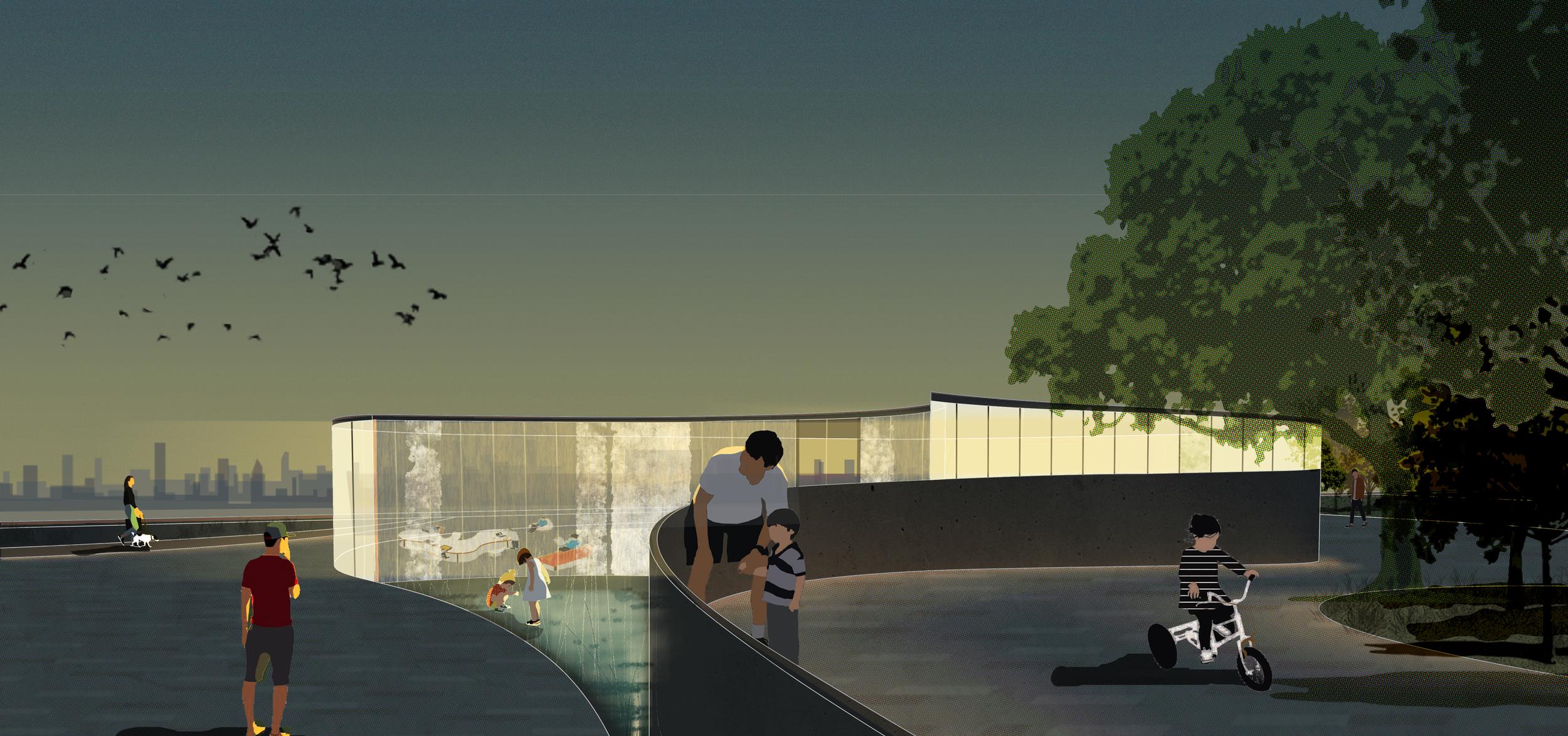Make Deaf visible through spatial study and community engagement
#PhysicalDesign
#CommunityEngagement
#InclusiveDesign
#UX
#SocialEquity
Instructor
Sierra Bainbridge (MASS Design Group)
Team
Xiaoji Zhou
Role
Community Engagement, Data Analysis, Concept, Persona and User Journey Map, 3D Modeling, Rendering
For
Harvard GSD Fall 2020
*This project received Penny White Project Fund from Harvard GSD for further research

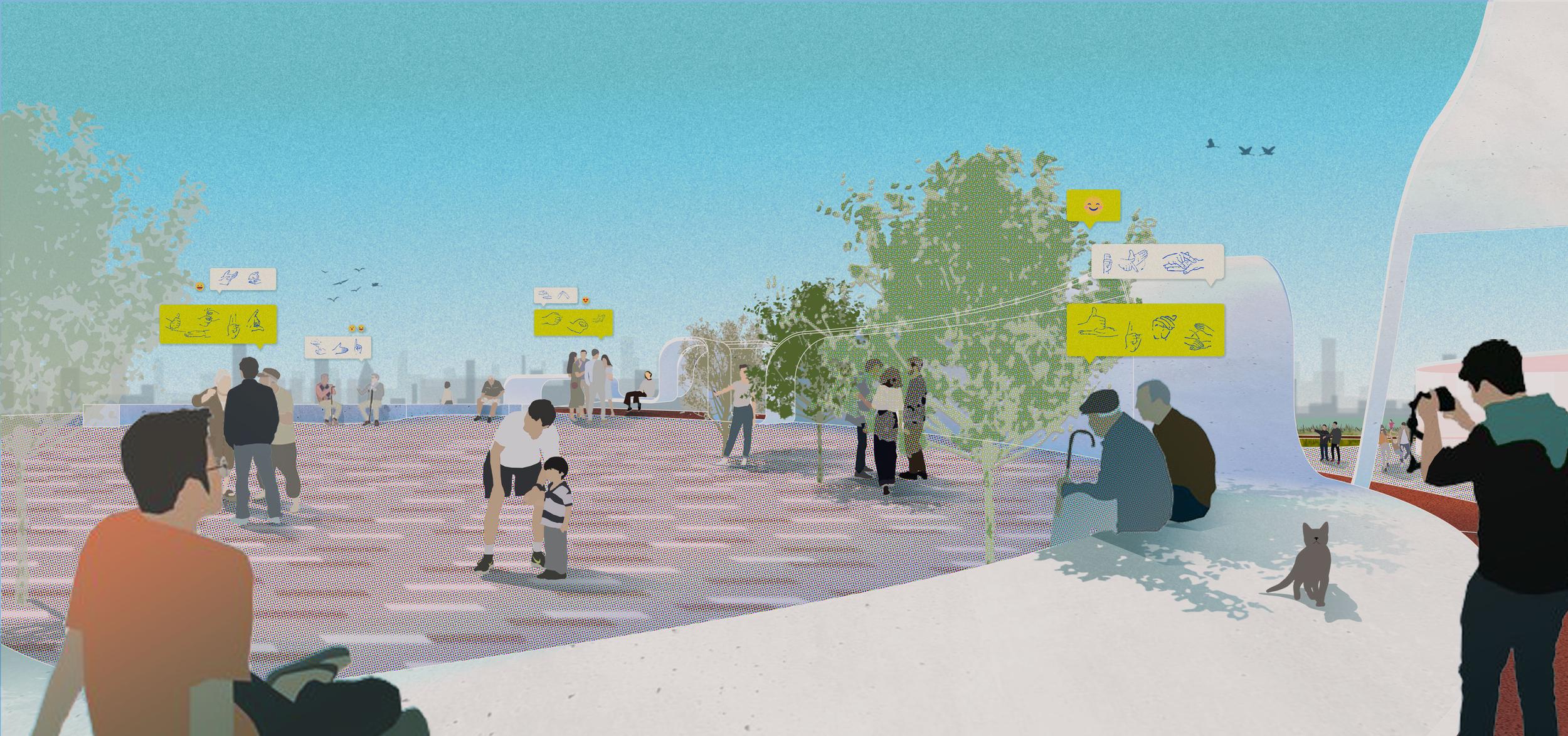
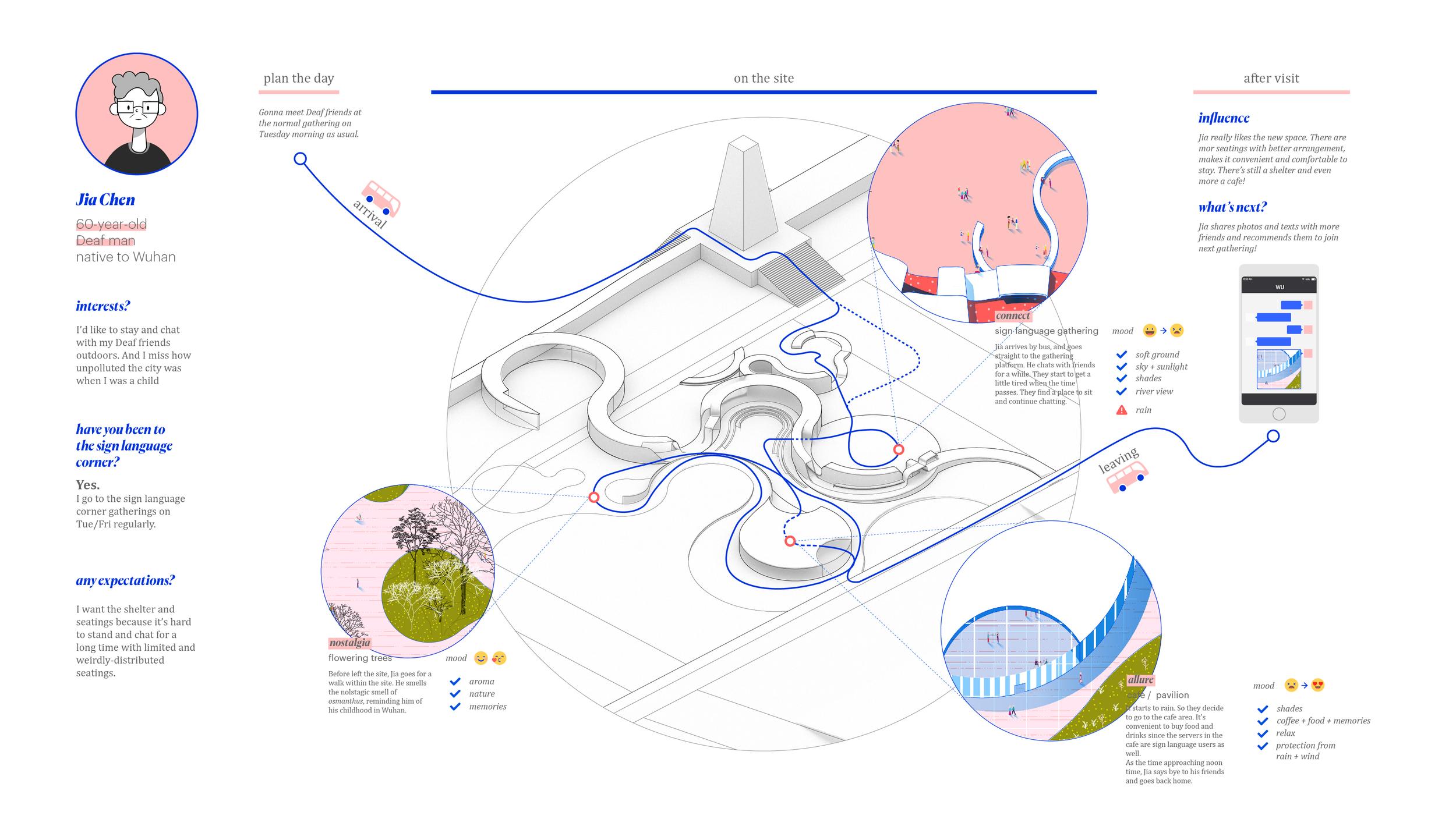
At the beginning of 2020, the COVID19 pandemic unexpectedly attacked Wuhan, China, hitting the huge city down with uncontrolled tragedies, changing challenges, and continuous panic. On the early morning of Jan 23, Wuhan claimed to be completely locked down and all transportation accesses had been cut down. Xiaoji was trapped in Wuhan for 77 days, among the other 11 million people, during which she saw the news and videos about Deaf community in Wuhan. There were Deaf gatherings happening at the Sign Language Corner at the Riverside Park on Tuesday and Thursday mornings every week, which contained 200 to 500 people each time, and was one of the largest Deaf gatherings around the world. The Deaf in Wuhan, during the pandemic time, replied on the gathering for COVID and city news updates, which made them extremely vulnerable with this limited resource of information under the lockdown period.
The Deaf, among the differently-abled populations, is the most “normal” ones in daily life, and thus, is the most neglected ones from the public. Help in such emergency period was not sufficient. The missing connection and communication between the Deaf community and hearing community become urgent and obvious.
Therefore, during the fall semester of 2020, collaborating with our partners - Hubei Disabled Persons’ Federation, Wuchang District Federation of Deaf, ProSigner (sign language volunteer group), and the founder of the Sign Language Corner, Jiyu Deng, and other Deaf individuals - we proposed a redesign of the Sign Language Corner. Through community engagement, we communicated back and forth with the Deaf community and engaged them in our design process, listening to their own stories and memories. From various engagement and sensory experiments, we searched for the Deaf’s true voices, and turned their desires into a new design of the Sign Language Corner, where the Deaf community becomes visible, the experience of the Deaf user group is amplified, and people of all ages are welcomed.
This redesign of the Sign Language Corner serves as a start of our communication and partnership with the Deaf community, from which we will continue our research and design for the Deaf. Upon our partners request, a guidebook for Deaf Space Design and a website of Sign Language Dictionary are in our next plans. We hope our work will further influence the society that can make the Deaf community visible to the public and build up a bridge of communication.
 Partnership
Partnership Deaf & Differently-abled History & Stats in China
Deaf & Differently-abled History & Stats in China
PART I: Community Engagement Documentation
Initial Engagement Design Brainstorm

01. Sensory Experiment
DEAF GAIN: What’s being amplified?
Through our chats with partners, we received a request of trying ourselves to live one day as a Deaf. We tried to cut hearing experience and recorded our day. To our surprise, instead of “losing” a sense, a lot of the things were actually amplified without hearing: the vibrant of wind and cars, sharp transition from soft to hard touches of paving materials, the crisp of falling leaves, and more.
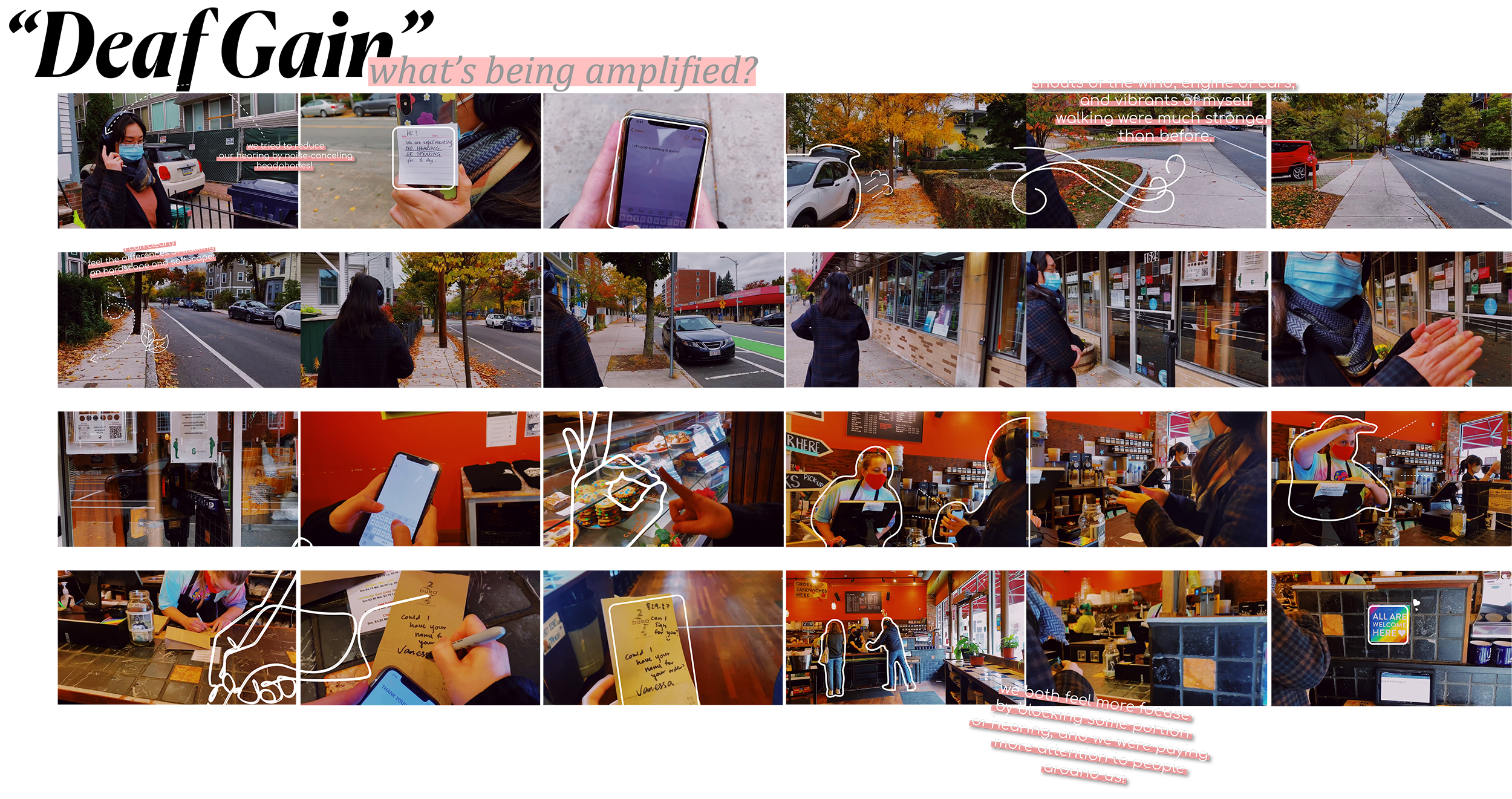
02. Online Survey
Due to the COVID situation, unfortunately, we are unable to travel to Wuhan and conduct on-site ethnographic research and communicate with the Deaf community directly. Instead, by considering special condition of Deaf people, we sent out an online survey to learn about their stories and memories about senses and space. The survey contained 11 open-ended questions, and we received over 30 responses.
 ︎Survey Results
︎Survey Results
We also asked for their favor of a place or material that they like or feel comfortable with, here are some photos we received:

PART II: Site Natural Context Analysis

With the help from Xiaoji’s father, we had a clear virtual nevigation through the site that helped us to identify conflict zones and discover interventions for spatial improvement.

PART III: Concept Ideation
Design idea sketches


Based on engagement processes and chats with our partners, we came up with three main focuses on the redesign of the Sign Language Corner:

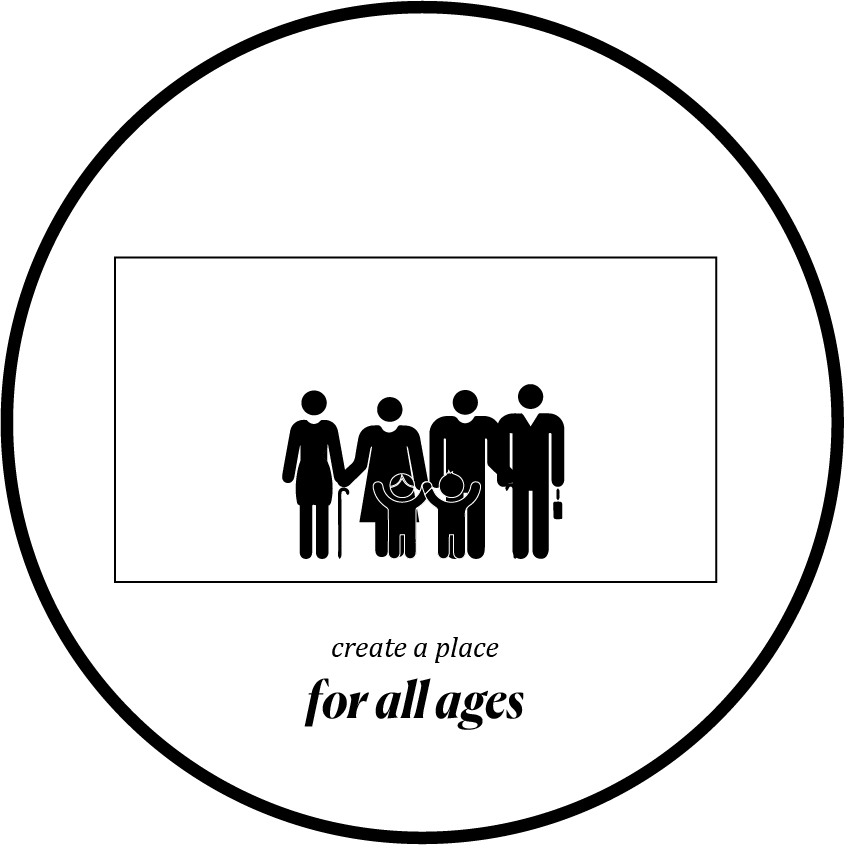
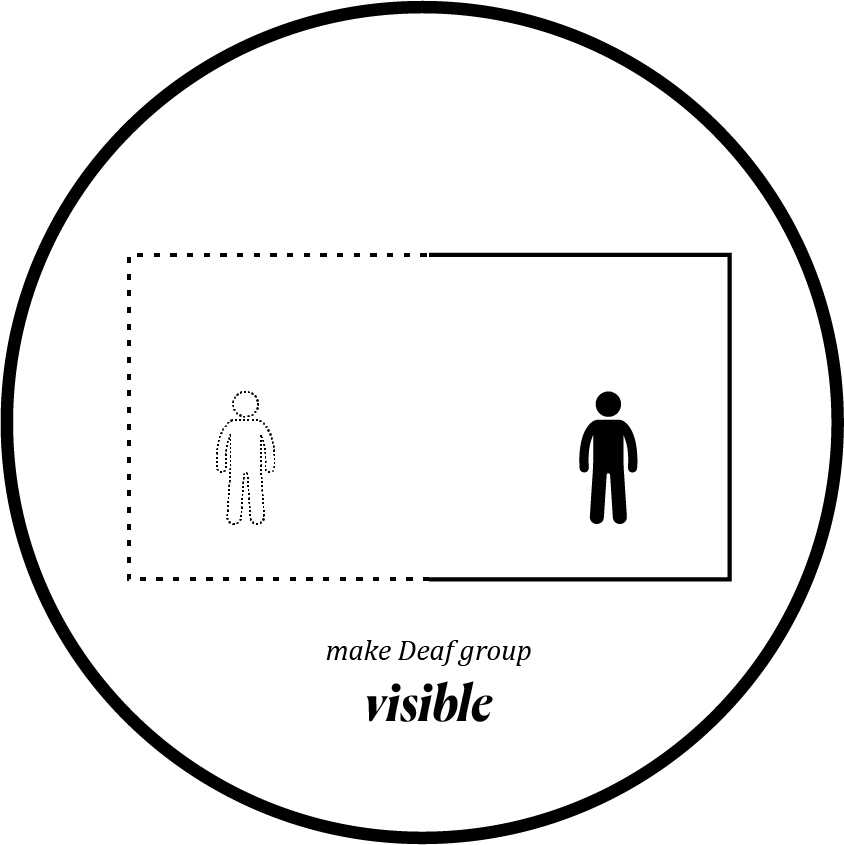
We choose the pattern of circle as our design language because it’s the pattern of “inclusive,” and it’s the most comfortable pattern for Deaf to communitcate.

PART IV: Sign Language Corner Redesign
As the first part of design scope, we started a replanning and redesign of the Sign Language Corner.


Personas, User Journeys and Sensory Abundance
How do different people experience the place differently?



